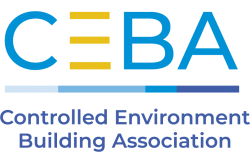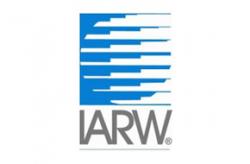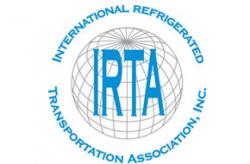Vaccinating The Unvaccinated
President issues controversial emergency temporary standard to curb COVID-19.
In September 2021, President Biden announced a six-pronged, comprehensive national strategy to put the nation on a path out of the pandemic. The strategy focuses on Vaccinating the Unvaccinated, Further Protecting the Vaccinated, Keeping Schools Safely Open, Increasing Testing and Requiring Masking, Protecting Our Economic Recovery, and Improving Care for Those With COVID-19. Perhaps the most controversial piece of this plan continues to be “Vaccinating the Unvaccinated.” Under President Biden’s directive, all employers with more than 100 workers will be forced to require coronavirus vaccinations or test employees weekly, affecting about 80 million Americans.
To achieve this mandate, Biden instructed his Occupational Safety and Health Administration (OSHA) to issue an emergency temporary standard (ETS) to minimize the risk of COVID-19 transmission in the workplace. The ETS, which was released on November 4,, 2021, and published in the Federal Register on November 5, 2021, establishes binding requirements to protect unvaccinated employees of large employers (100 or more employees) from the risk of contracting COVID-19 in the workplace. OSHA has claimed that the ETS is necessary to protect unvaccinated workers from the risk of contracting COVID-19 at work.
Who Is Covered
The ETS generally applies to employers in all workplaces that are under OSHA’s authority and jurisdiction, including industries as diverse as manufacturing, retail, delivery services, warehouses, meatpacking, agriculture, construction, logging, maritime and healthcare. Within these industries, all employers that have a total of at least 100 employees firm- or corporate-wide, at any time the ETS is in effect, are covered. This includes temporary and seasonal workers hired by the company. Workers technically employed by a staffing agency are counted towards the employee count for the staffing agency and not theirs.
What the Rule Requires
The core requirements of the ETS are:
- PTO for vaccination – Up to four hours of paid time off, including travel time, at the employee’s regular rate of pay per dose for employees to get vaccinated (only for vaccinations that occur after the effective date of the ETS).
- PTO to recover from vaccination – A reasonable amount of time off and paid sick leave to recover from side effects experienced following any vaccination dose (other than booster shots) for recovering from adverse effects of the vaccines.
- Vaccination or testing to report to work – A soft-vaccine mandate, under which an employee may only report to the workplace after demonstrating: Proof of being fully vaccinated or for employees who decline to get vaccinated or decline to share their vaccination status, proof of a negative COVID-19 test result from within the last seven days. For the testing component of the rule, an employee who reports to a workplace where other individuals such as coworkers or customers are present, at least one day every seven days, must: • Be tested for COVID-19; and • Provide documentation of the most recent COVID-19 test result to the employer no later than the seventh day following the date on which the employee last provided a test result. An employee who does not report to such a workplace during a period of seven or more days (e.g., teleworking for two weeks prior to reporting to a workplace with others) must: • Be tested for COVID-19 within seven days prior to returning to the workplace; and • Provide documentation of that test result to the employer upon return to the workplace. If an employee does not provide documentation of a COVID-19 test result as required above, the employer must keep that employee removed from the workplace until the employee provides a test result.
- Face coverings for unvaccinated workers – In addition to producing a negative COVID-19 test, for employees who decline vaccination, the employer must ensure they wear a face covering that fully covers the nose and mouth at all times while working indoors and when occupying a vehicle with another person for work, regardless of the levels of community transmission. Consistent with current OSHA guidance, the face covering requirement does not apply when an employee is alone in a room with floor to ceiling walls and a closed door, for brief periods while the employee is eating or drinking or for identification purposes in compliance with safety and security requirements, or where the employer can show use of a face covering is infeasible or creates a greater hazard (e.g., when it is important to see the employee’s mouth for reasons related to their job duties, when the work requires the use of the employee’s uncovered mouth, or when the use of a face covering presents a risk of serious injury or death to the employee). Surprisingly, the ETS does NOT require employers to pay for any costs associated with face coverings, unless required by other laws, regulations or collective bargaining agreements.
- Removal from work of COVID-19 cases – Requires each employee to promptly notify the employer when they receive a positive COVID-19 test or are diagnosed with COVID-19 by a licensed healthcare provider and immediately remove such employees from the workplace and keep them removed until the employee: (i) Receives a negative result on a COVID-19 nucleic acid amplification test (NAAT) following a positive result on a COVID-19 antigen test if the employee chooses to seek a NAAT test for confirmatory testing; (ii) Meets the return to work criteria in the CDC’s “Isolation Guidance”; or (iii) Receives a recommendation to return to work from a licensed healthcare provider.
Court Actions and Next Steps
Since OSHA published the ETS in the Federal Register, petitioners have filed more than 30 separate lawsuits challenging the legality of the ETS and moving to temporarily, and then permanently, enjoin implementation of the ETS. The Fifth Circuit issued a preliminary stay blocking implementation of the ETS. The cases were then consolidated and sent to the Sixth Circuit for consideration. The Sixth Circuit lifted the stay, which was appealed to the Supreme Court. After hearing oral arguments, the Supreme Court issued a ruling on January 13, 2022, to reinstate the stay, stating that OSHA had likely acted outside of its authority in establishing the sweeping vaccine and testing requirements for all businesses with over 100 employees. It is important to note that the Supreme Court action is technically only a temporary stay of the ETS pending a full review of the legal challenges to the rule by the Sixth Circuit. However, the Court’s conservative justices sent an unmistakable signal that the high court’s conservative majority believes OSHA exceeded its statutory authority in issuing a workplace standard to address an issue of broad public health.
President Biden and the Department of Labor were quick to express their disappointment in the Supreme Court’s decision. They continue to urge businesses to require vaccinations for their employees. OSHA has indicated it will be evaluating all options to ensure workers are protected from COVID. OSHA went on to reiterate the agency will do everything in its existing authority to hold businesses accountable for protecting workers, including under the COVID-19 National Emphasis Program and General Duty Clause. GCCA has been heavily engaged in communicating our concerns regarding the ETS through coalitions, grassroots campaigns, meetings with Congress and administrative officials throughout the process. GCCA is very pleased with the Supreme Court’s decision and will continue to work with policy makers and like-minded partners as the process moves forward. GCCA members are strongly encouraged to remain vigilant in implementing their COVID health and safety protocols in anticipation of possible increased OSHA enforcement activity in the wake of the ETS decision
LOWELL RANDEL is Senior Vice President, Government and Legal Affairs at GCCA. EMAIL: lrandel@gcca.org
JORDAN BONFITTO is Director of Government Affairs at GCCA. EMAIL: jbonfitto@gcca.org



